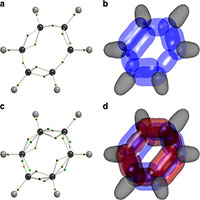For the first time, scientists have sequenced the entire genome of axolotl, a salamander that is able to regenerate many body parts after injury.
Humans can regrow arms, legs, regenerate each damaged part? The prospect that sounds like only the Scarecrow in the Dragon Balls manga is closer to us than ever.
According to Futurism, after sequencing the entire genome of the axolotl , researchers from the University of Kentucky hope to be able to apply the salamander’s strange properties to humans. Specifically, this Mexican-origin salamander has the ability to regenerate missing limbs, or heal damaged areas of skin on its own.

This cute axolotl salamander has the ability anyone could wish for: self-regenerating damaged parts. (Image: Wiki).
“It’s hard to find things that they can’t regenerate: From limbs, tails, spinal cord, eyes, even retinas in some species. We also saw the process of regenerating half of their brains. them,” said researcher Randal Randal Voss.
Sequencing the human genome was once a great achievement, but compared to the axolotl genome, human DNA is still up to 10 times shorter. The team therefore resorted to new techniques.
“Just a few years ago, no one thought it was possible to decode genomes larger than 30GB,” says biologist Jeramiah Smith . This also opens up the possibility that the decoding of animals with large genomes will take place more frequently.”
The team also hopes that understanding the axolotl genome after decoding will help medicine in the future.
“Now we can hack into the genomic information chain, find out what makes this salamander so strange. Hopefully one day we can turn the information we get. become useful for human therapy, the potentially untapped potential of each part of the body,” Voss said.

